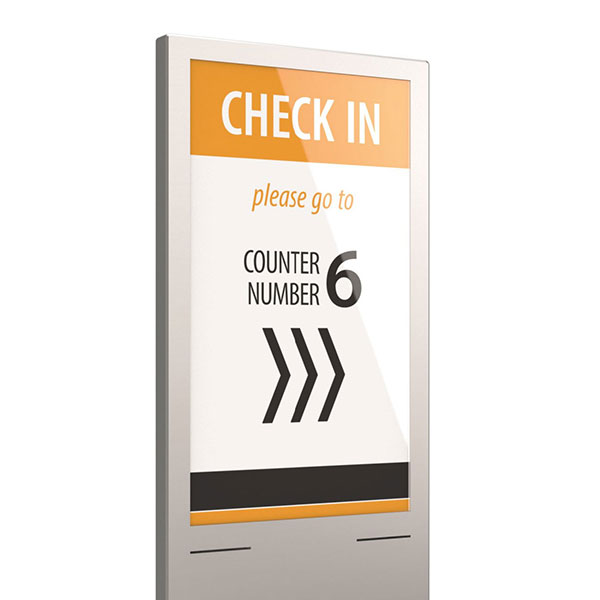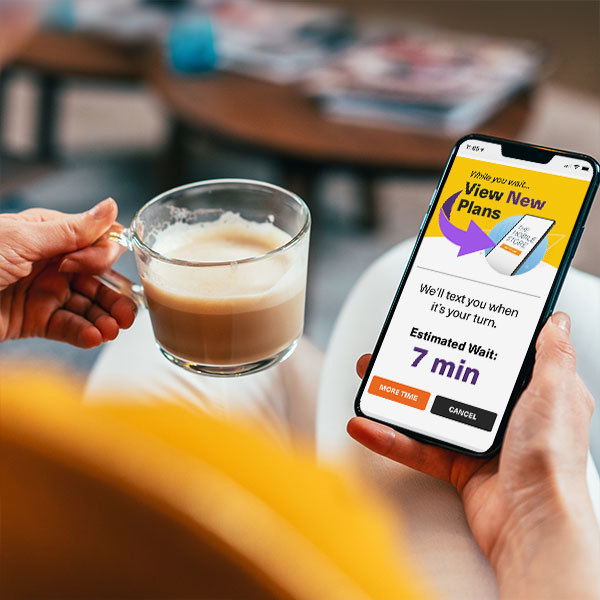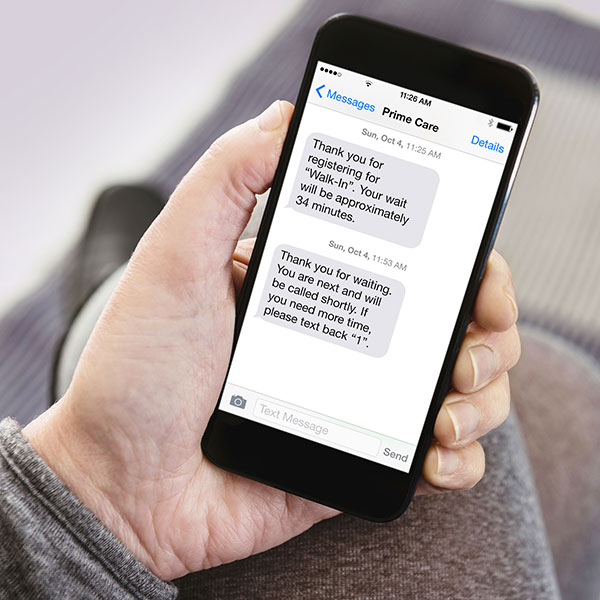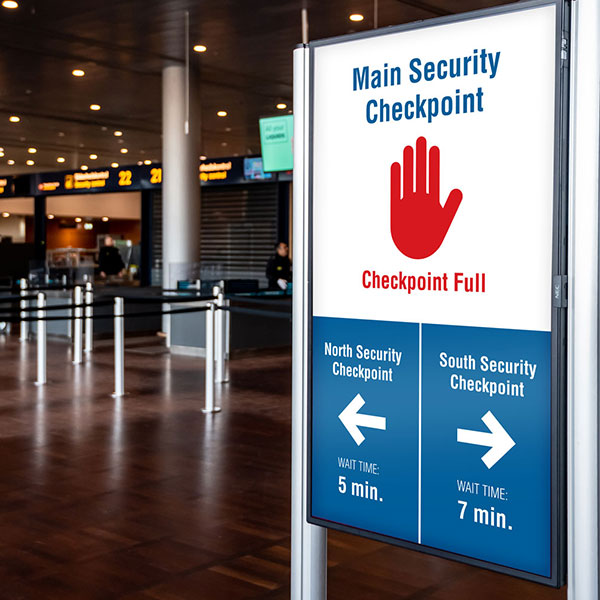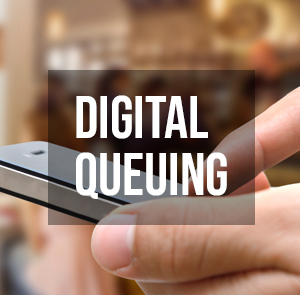
Electronic Queuing vs. Virtual, Digital, and Mobile Queuing: What’s the Difference?
Gone are the days of anxiously clutching paper tickets at the bank, food counter, or government office. In today's fast-paced world, long waits feel like a relic of the past, especially when businesses are vying for our attention at every turn.
Amidst the buzzwords — electronic, virtual, digital, mobile queuing — it's easy to feel lost in a jungle of jargon. But the real differences lie in how we wait: in-person, online, or through our smartphone.
Let’s take a closer look at how virtual, mobile, digital, and electronic queuing solutions are reshaping queue management so you can decide which approach is right for your business.
What Is Electronic Queuing?
Electronic queuing, also known as linear queuing or call-forward, refers to a first-come, first-served system where customers physically wait in a single line for their turn. Digital signage, register lights, and/or audio announcements call the next customer in line to an available service point. This orchestration typically happens when a service agent pushes a call button to trigger the sequence. With some systems, the trigger is done automatically, such as at the end of a transaction.
Electronic Queuing Uses
Electronic queuing is popular in settings where there’s high foot traffic and a need for structured customer flow, such as customs areas at airports, teller lines in banks, and the checkout line in big box retail stores.
Electronic Queuing Benefits
There’s greater equity as all customers move through a single line to various service counters, with everyone getting their turn efficiently. Freed from the task of directing traffic, staff can devote their attention to assisting customers as needed, boosting overall higher customer satisfaction. Additionally, many businesses take advantage of electronic queuing’s built-in digital signage to advertise and cross-sell to waiting customers.
What Is Digital / Virtual Queuing?
Digital queuing is synonymous with virtual queuing; both refer to eliminating physical waiting in line and allowing customers to join a queue via a website, mobile app, or kiosk. Customers receive real-time updates about their wait time either on their device or with conveniently located digital signage so that they can go about other activities until it's their turn for service.
Virtual Queuing Uses
Virtual queues are used throughout many industries. Theme parks, casinos, and restaurants allow visitors to reserve their spot in line through a mobile app, enabling their customers to explore other attractions, engage in other on-site activities, shop, or grab a drink at the bar – all leading to a better customer experience (and in many instances, incremental revenue). Banks and doctors’ offices often implement digital queues to limit lobby or waiting room congestion, and prevent bottlenecks in serving customers or patients.
Virtual Queuing Benefits
Two of the primary advantages of virtual queuing are convenience and flexibility. Customers can use their smartphones or other digital devices to join the queue from anywhere, freeing them from the constraints of physical waiting areas. This virtual approach is particularly beneficial for businesses with limited space or seeking to deliver a superior customer experience. Virtual queuing has the extra benefit of being able to add advanced features like appointment scheduling, text updates, and video calls.
What is Mobile Queuing?
Mobile queuing is a subset of digital/virtual queuing that refers to solutions specifically designed for smartphones and mobile devices. Combining the convenience of virtual queuing with the mobility and ubiquity of mobile technology, customers can manage wait times on the go — joining queues, receiving updates, and even making service requests directly from their phone. In other words, all forms of communication — joining a queue, making appointments, tracking wait times, being called for service, and two-way texting — are all orchestrated through a mobile device, via SMS, app, or web browser.
Mobile Queuing Uses
Mobile queuing is particularly well-suited for bustling industries such as restaurants, theme parks, entertainment, and service-oriented retail. For instance, diners can join a virtual waitlist via app and receive notifications when their tables are ready. Likewise, theme park guests can reserve ride times through apps to eliminate the wait and enhance their overall experience while concertgoers expedite entry with virtual ticket scanning.
Mobile Queuing Benefits
Mobile technology’s intuitive interfaces make it easy for patrons to manage wait times and experiences through their own personal, handheld devices. Businesses are also empowered to communicate directly with mobile users and track key metrics (such as peak hours or popular service offerings) to identify trends and patterns in customer behavior and make informed decisions about staffing levels and product offerings.
What is Non-Mobile Digital Queuing?
Non-mobile queuing is another variation of virtual/digital systems. Customers make their appointment online or check in at an in-store kiosk, watch their place in via an in-store display monitor, and are called to service either with a light, audio recording, or by an employee.
Digital Queuing Uses
Non-mobile virtual queues are seen in healthcare facilities and government offices like the DMV and passport offices. These environments typically have high customer traffic and a need for efficient, orderly service management, but may not want the added features of mobile queuing such as real-time remote check-ins, GPS-based location tracking, and mobile app notifications for status updates.
Digital Queuing Benefits
Non-mobile virtual queues offer improved organization of customer flow, public transparency in wait times, and enhanced data collection for better service management and analysis. While this solution may not have all the features of a fully modern mobile queue experience, the benefits of speed, equity, visibility, data collection, and insights still make it a very attractive option and a remarkable improvement over manual legacy processes.
How Do I Choose the Right Queuing Solution?
Queuing solutions can help you work toward a number of different business goals:
- Avoid onsite congestion: If you have small waiting areas, avoid congestion in lobbies and waiting rooms and enable people to arrive at designated times.
-
Manage physical line flow: In instances where people need to be in person, such as airport security or passport offices, queuing products help maintain order.
-
Pre-visit prep: At locations like a doctor's office or bank, pre-information allows the person delivering service to adequately prepare before the customer or patient arrives.
-
Generate incremental revenue: For retail and hospitality businesses, would you rather have your customers idly (and sometimes anxiously) waiting on a line or visiting other parts of your site where they can spend money without worry of losing their place on line?
Here are just a few of the questions a queuing expert might ask to determine which system is right for your particular business needs.
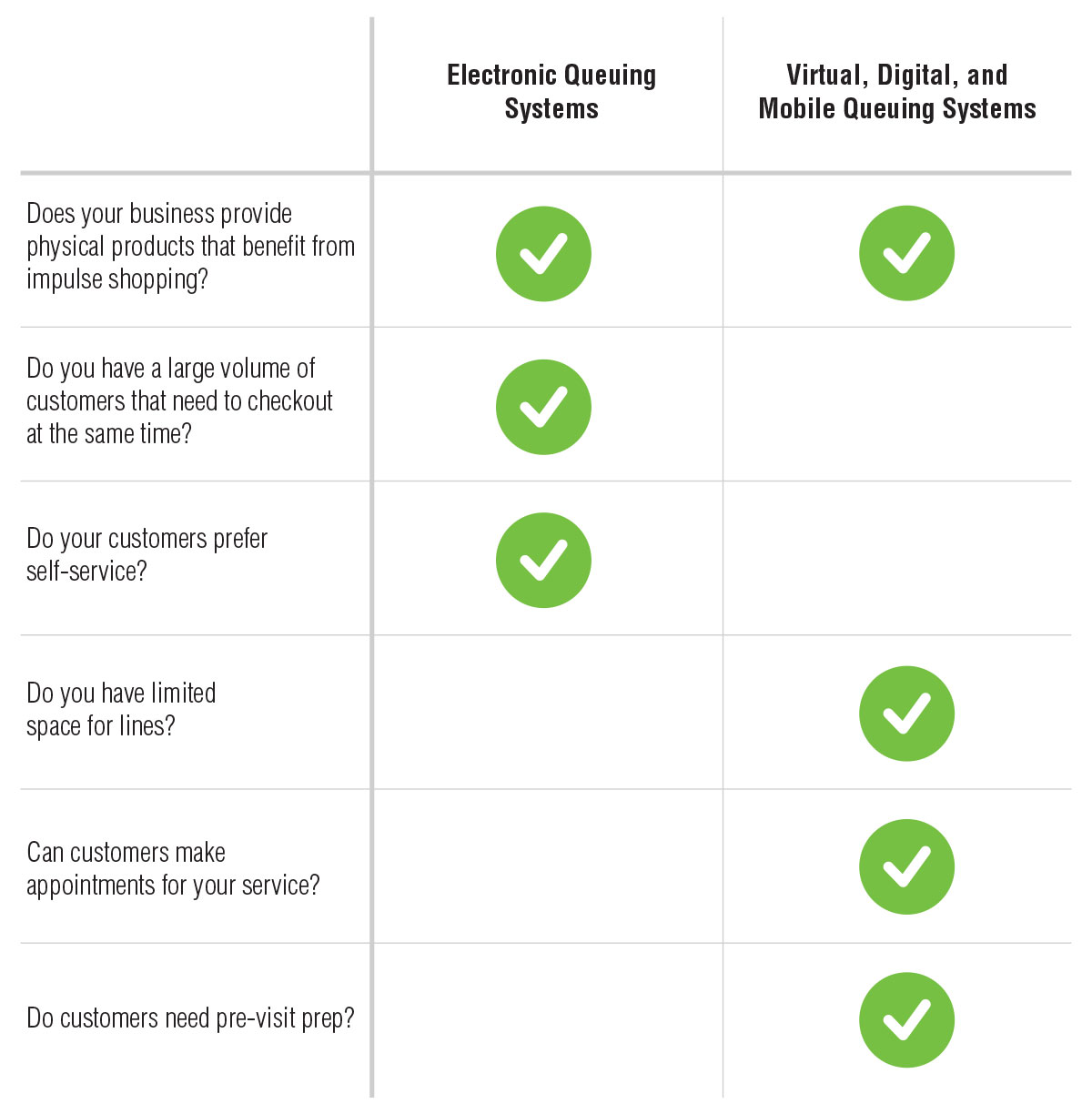
Choosing the queuing solution that’s right for your business and your customers is a very strategic decision. The optimal solution minimizes wait times, increases revenue, enhances the customer experience, and is easy to use.
For more guidance on modern queue management solutions – including electronic, virtual, digital, and mobile queuing – talk to Lavi Industries, a long-time leader in queuing innovation. Our design team can provide expert insights into the ideal modern queue management system to meet all your needs.
SUBSCRIBE
Subscribe to stay up-to-date with new products, resources information and news.
RECENT RESOURCES
Theft at the Register: How Strategic Queue Design Protects Profits
ViewRapid Deployment Crowd Control: JetTrac Portable Barriers For The Biggest Spaces
View4 Psychological Reasons Your Customers Hate Waiting In Line
ViewFrom Bleachers To Bookstores: 4 Campus Crowd Control Solutions
View









